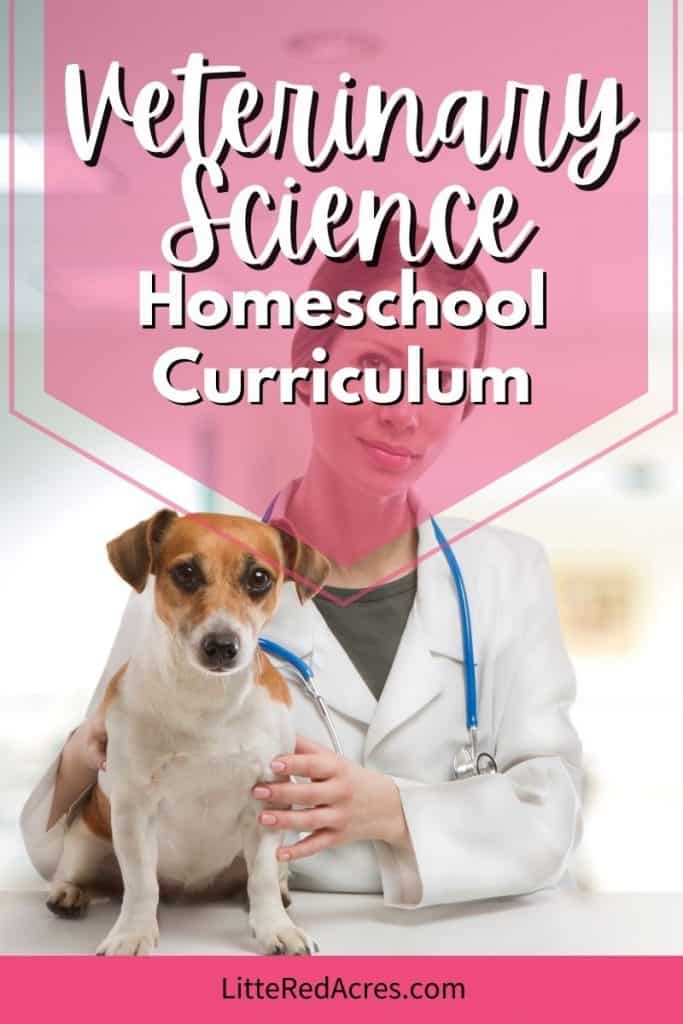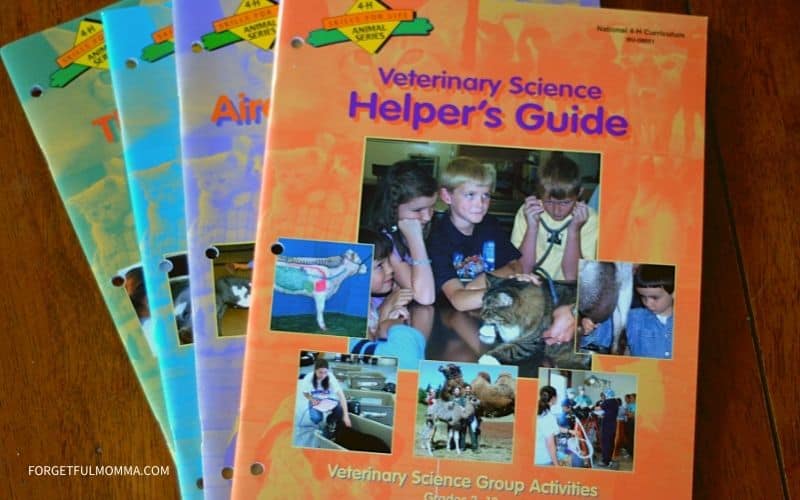A lot of kids dream of becoming a vet when they get older, at least one of my three kids is planning something animal-related, vet or animal conservation officer. Adding in veterinary science seems like a no-brainer in your homeschool.

This post contains affiliate links, see my disclosure policy for more information.
Veterinary Science Homeschool Curriculum
I got extremely excited when I found out about the 4-H curriculum from a local mom. They have so many different options that I can’t believe that I hadn’t learned about their curriculum before.
The 4-H curriculum starts at grade 3 and goes to grade 12. This one is Veterinary Science.
Level 1: Grade 3-5: Introduces youth to the normal animal, basic anatomy and systems, elementary principles of disease, and careers with animals.
Level 2: Grade 6-8: This guide involves youth in an in-depth investigation of normal and abnormal systems, preparation for college, and exploration of the diversity of the veterinary profession.
Level 3: Grade 9-12: This guide involves youth in an in-depth investigation of normal and abnormal systems, preparation for college, and exploration of the diversity of the veterinary profession.
There is also a Helper’s Guide: These supplemental materials provide helpers with activities to facilitate learning for various ages of youth. Numerous group activities help youth develop essential life skills as they pursue their interest in veterinary medicine.

More Veterinary Science Book Options
There are a number of great books that are available on Amazon as well. From coloring books that are quite detailed and labeled. We have a few of these ourselves, and more books that can help your child get ready for their future.
Veterinary Anatomy Coloring Book – Color your way to a complete mastery of veterinary anatomy. Approximately 400 easy-to-color illustrations and corresponding anatomical descriptions guide you through the head, neck, back, thorax, abdomen, extremities, reproductive organs, and many more body parts of dogs, cats, horses, pigs, cows, goats, and birds.
Plus, a new section on exotics takes you through the anatomy of ferrets, rodents, rabbits, snakes, and lizards to ensure you are well versed in all potential household pets.
Introduction to Animal and Veterinary Anatomy and Physiology – A sound knowledge of anatomy and physiology is an essential basis for the effective clinical treatment of companion animals and farm animals alike.
This book provides a comprehensive description of the anatomy and physiology of dogs and cats. The book builds on these foundations with detailed descriptions of exotic small species including birds, and domestic farm animals, including cows, sheep, and pigs, as well as the horse.
Introduction to Veterinary Anatomy and Physiology Workbook – Understanding companion animal anatomy and physiology is the foundation to providing good veterinary care, but the underlying concepts covered in the classroom are not always easy to relate to everyday clinical practice.
How to Become a Veterinarian: What They Do, How To Train, Daily Life As Vet, Is It Really The Right Career For You? – This fact-pact and enlightening book covers everything kids need to know about becoming a vet. It also gives a realistic view of what daily life is like as a vet – the challenges and triumphs.
More Animal Science
Animal science curriculum for your homeschooling might not be a one and done boxed curriculum idea but there are a lot of options for you and your child to learn from.
I have found these great options that we have really enjoyed using that you and your kids might also enjoy using in your homeschool this year.
Animal Science Curriculum for Homeschool
